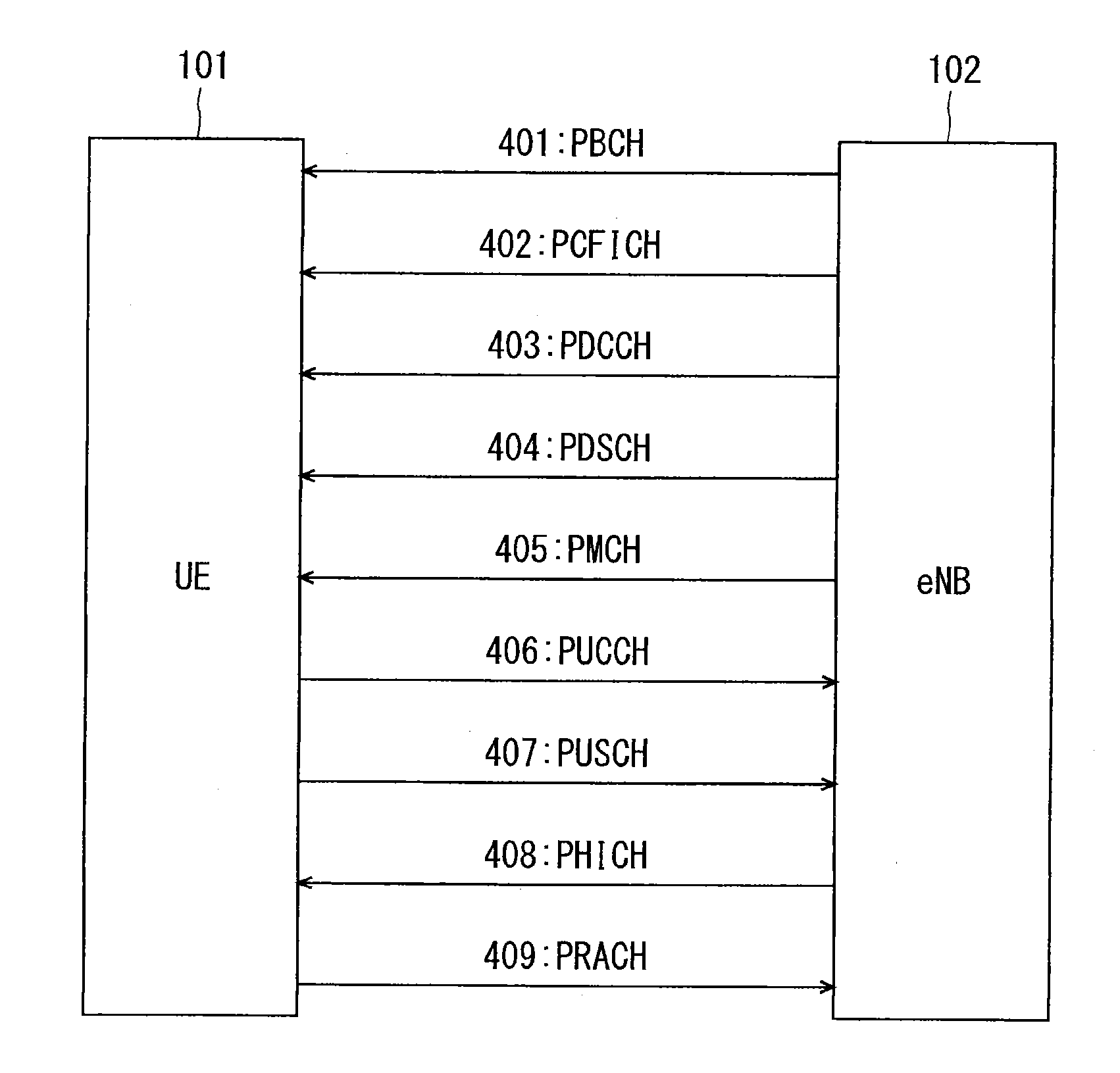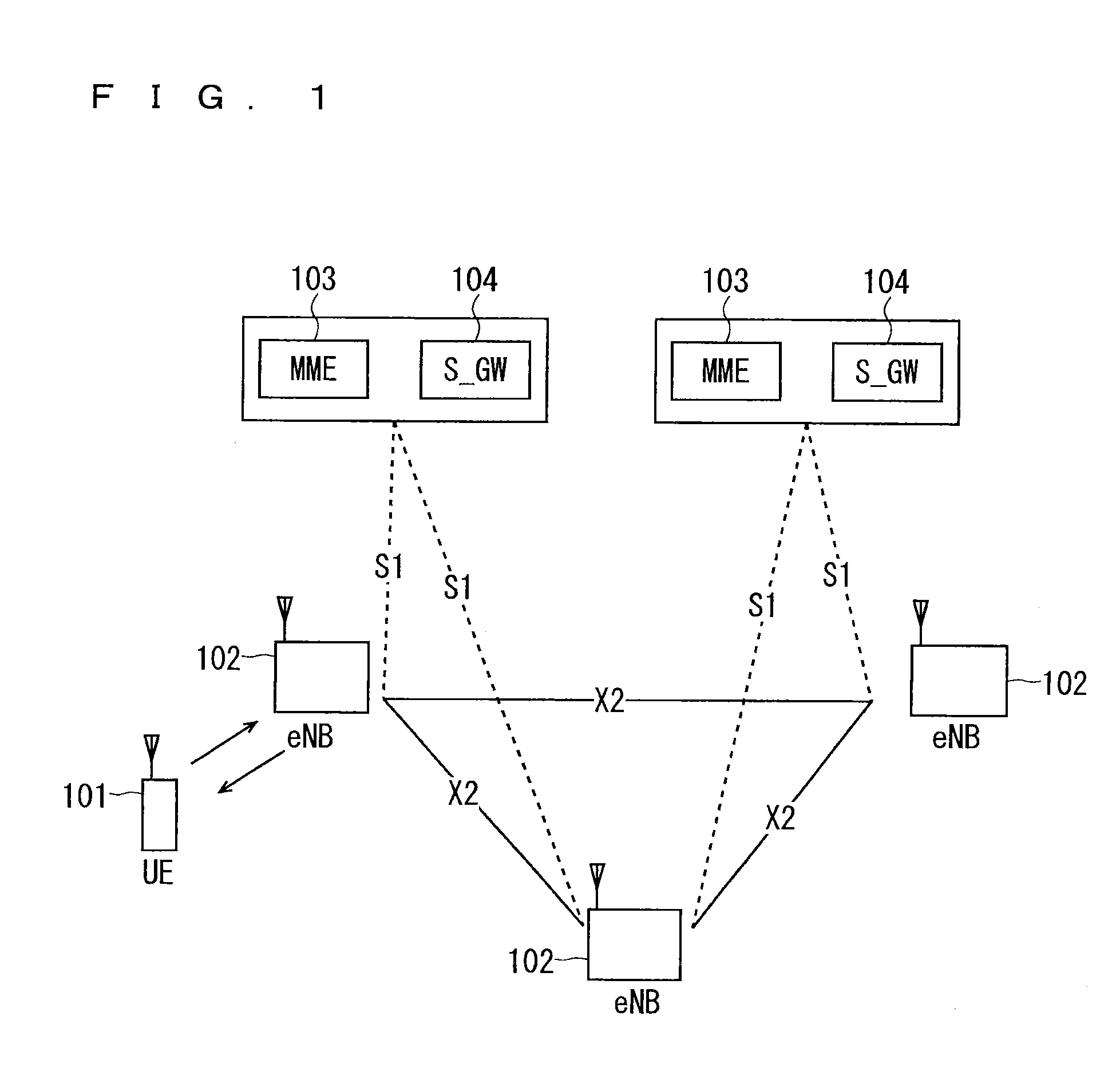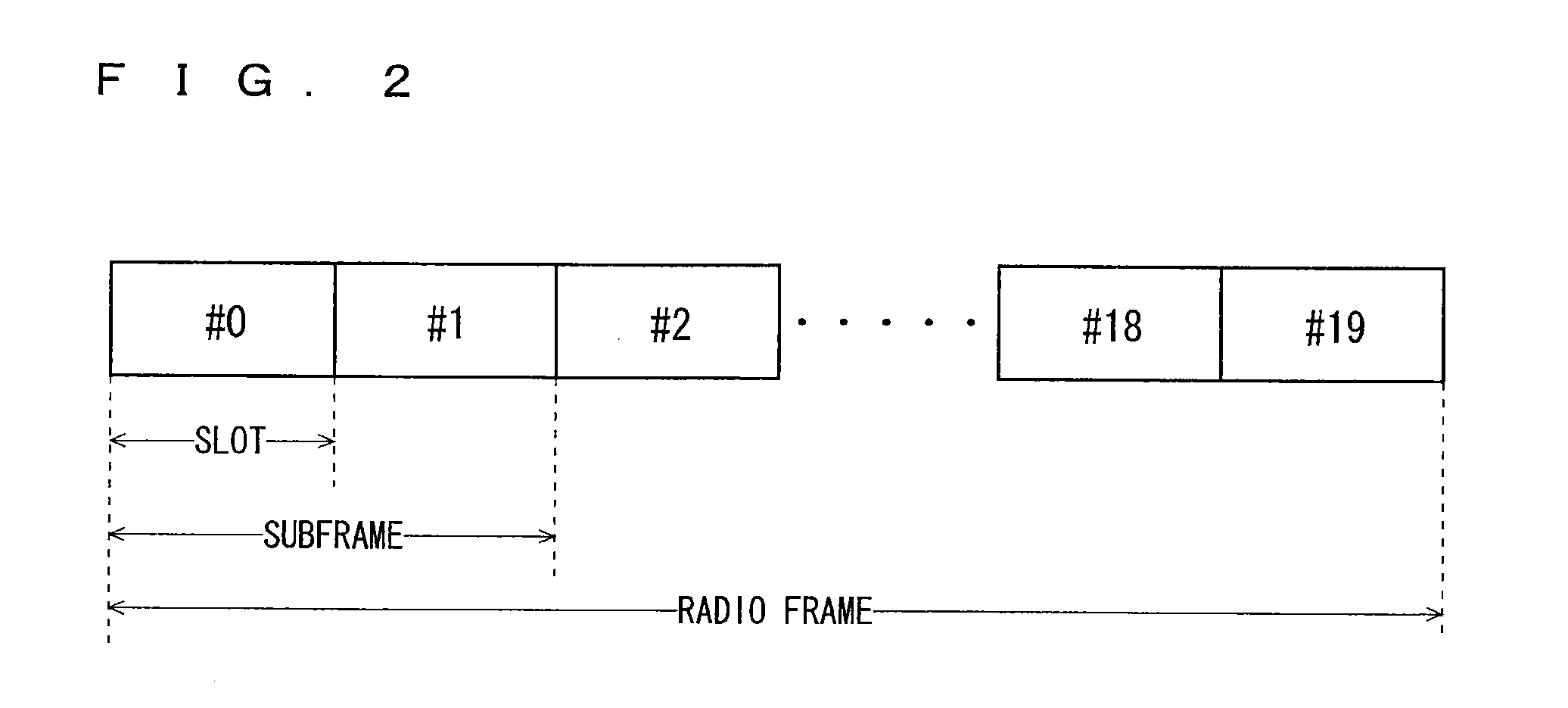Communication system
a communication system and communication system technology, applied in the field of communication systems, can solve the problems of radio link failure (rlf), not disclose, and involve collision risks, and achieve the effect of stabilizing the operation of the communication system
- Summary
- Abstract
- Description
- Claims
- Application Information
AI Technical Summary
Benefits of technology
Problems solved by technology
Method used
Image
Examples
first embodiment
[0129]FIG. 7 is a block diagram showing an overall configuration of an LTE mobile communication system, which is currently under discussion of 3GPP. Currently, an overall system configuration including closed subscriber group (CSG) cells (Home-eNodeBs (Home-eNB; HeNB) of E-UTRAN, Home-NB (HNB) of UTRAN) and non-CSG cells (eNodeB (eNB) of E-UTRAN, NodeB (NB) of UTRAN, and BSS of GERAN) is studied in 3GPP and, as to E-UTRAN, the configuration as shown in FIG. 7 is proposed (see Chapter 4.6.1 of Non-Patent Document 1).
[0130]FIG. 7 is described. A user terminal device (hereinafter, referred to as “user equipment” or “UE”) 71 is capable of performing radio communication with a base station device (hereinafter, referred to as “base station”) 72 and transmits / receives signals through radio communication. The user terminal device is equivalent to a communication terminal device. The base stations 72 are classified into an eNB 72-1 that is a macro cell and a Home-eNB 72-2 that is a local nod...
second embodiment
[0177]A problem to be solved in a second embodiment is described below. In a case where the first embodiment is used, the following problem occurs. As described above, in access from a user equipment through a CSG cell, an MME performs access control, that is, restricts access from a UE to a CSG cell. That is, a base station does not restrict access to the CSG. As a result, for a UE unregistered with the CSG to which a cell belongs, the cell (CC) may be configured as a SCell to become active.
[0178]Therefore, in a communication system, the following problem occurs if an MME performs access control in access from a user equipment through a CSG cell. Considered here is a case in which a base station configures, for a user equipment unregistered with a CSG to which a cell belongs, the cell as a SCell. In this case, after the cell is configured as a SCell, access from the user equipment through the cell is not permitted through access control by the MME. In such a case, carrier aggregati...
third embodiment
[0262]A problem to be solved in a third embodiment is described below. In a case where the second embodiment described above is used, the following problem occurs. A CSG is a cell for specific subscribers, in which subscribers who are allowed to use can be specified by an operator. This leads to a problem that the second embodiment in which the user equipment unregistered with the CSG to which a cell belongs uses a resource of the cell contradicts the gist of the CSG.
[0263]As to the CSG cell, such an operation that CSG members belonging to the same CSG are preferentially provided with services is studied. Specific examples of the preferential treatment include the preferential allocation of resources to CSG members and discount of communication costs for CSG members. Along with this, the charging setting may differ between the CSG members and non-CSG members.
[0264]In a case where the second embodiment is used, if the user which belongs to a CSG wishes to receive some services or app...
PUM
 Login to View More
Login to View More Abstract
Description
Claims
Application Information
 Login to View More
Login to View More - R&D
- Intellectual Property
- Life Sciences
- Materials
- Tech Scout
- Unparalleled Data Quality
- Higher Quality Content
- 60% Fewer Hallucinations
Browse by: Latest US Patents, China's latest patents, Technical Efficacy Thesaurus, Application Domain, Technology Topic, Popular Technical Reports.
© 2025 PatSnap. All rights reserved.Legal|Privacy policy|Modern Slavery Act Transparency Statement|Sitemap|About US| Contact US: help@patsnap.com



